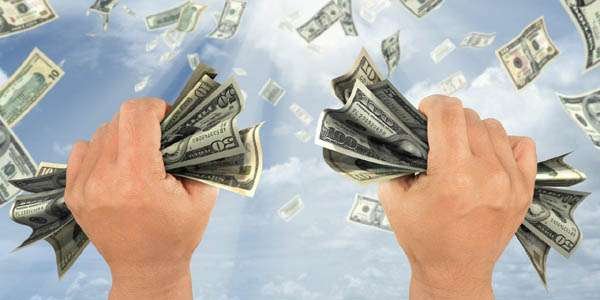
ROYALTIES EARNED BY YOUR SONGS
When you a write a song, it has the potential to be streamed, downloaded, printed, sampled, pressed, transmitted, re-transmitted, broadcast, re-broadcast and performed live. Basically, your music can be used in any which way possible, globally.
That’s a lot of revenue to track that requires a global infrastructure to monitor.
One basic rule of thumb: the more people that hear your music, the more money it makes and the harder it becomes to track.
To help you better understand how your music makes money, here is a list of the different royalties and potential revenue sources for your songs.
MECHANICAL ROYALTIES
A mechanical royalty is paid every time your song is reproduced. Simply put, every time your song is streamed on an interactive streaming platform like Spotify, Apple Music or YouTube, downloaded as an mp3 in a store like iTunes or Amazon, or sold on a physical product like a vinyl record or CD, your song has been reproduced and is due a mechanical royalty.
The mechanical royalty rate is a statutory rate set by the Copyright Royalty Board.
- For physical product and permanent digital downloads, it is currently set at $0.091 (9.1 cents) per song, per unit for songs 5 minutes of lesswith an additional 0.0175 cents for each additional minute.
- For ringtones it is 0.24 cents.
- For interactive streaming the rate varies.
As an example, if a royalty is generated via stream on Spotify, the rate will differ based on whether it came from a “Premium” or Ad based subscription; or on Apple Music, the interactive streaming rate will differ on whether it was done so from a student or family plan vs. an individual plan.
This formula for payment is based on a percentage of the digital services revenue less the performance royalty, (which is paid via a songwriters performance rights organization). In the US the main mechanical collection society is the Harry Fox Agency (HFA). Individual writers are unable to join HFA direct and need to work with a publishing administrator to register those songs with HFA in order to collect their mechanical revenue.
Of course, TuneCore Publishing Administration can handle that for you. Examples of mechanical royalty revenue sources are as follows:
- Interactive streaming (when someone chooses to listen to your song e.g. Spotify, Apple Music, YouTube, Tidal, Deezer etc.)
- Digital Downloads (from iTunes, Amazon)
- Physical product such as vinyl, CD’s and cassettes
- Ringtones / ringbacks available from AT&T, T Mobile
- Cover versions of your songs (when someone else records your song)
- Sample (when someone samples your song you take a piece of ownership in the new song)
- Karaoke (when someone makes a new recording of your song for Karaoke purposes)
- Greeting Cards
- On demand jukebox (such as TouchTunes)
Performance royalties are generated every time your song is performed in public. The scope of public performance royalties is wide and varied. Three main areas to cover radio, television and live.
They happen all the time – if you play a set at your local venue, or your song is played on the radio, you hear your song in the background radio on television or it’s on at the gym, the songwriter earns money. These royalties are collected by a performing rights organization (PRO) such as BMI or ASCAP.
The PROs issue a blanket license to any entity who wishes to use their songs. A blanket license grants the music user wishing to license music the right to use any song from the catalogue of the associated PRO for the duration of the license. The PRO then tracks the usage of the songs and pays through the royalties due from the performance of those songs.
There are 150 different PROs around the world, TuneCore Publishing Administration works in tandem with your local PRO in order to maximize the collection of performance royalties from the majority of these entities worldwide. TuneCore Publishing Administration does this by registering your songs directly with these PROs which results in much faster and accurate payments of your international performance royalties.
Examples of performance royalty revenue sources are:
- Interactive streaming (Spotify, Apple Music, YouTube, Tidal, Deezer etc.)
- Radio (AM/FM)
- Internet radio (such as BBC, KEXP, KCRW)
- Satellite radio/non-interactive streaming (such as Pandora, Sirius XM)
- TV (broadcast royalties paid by the broadcaster of a television show, film of advertisement – not to be conflated with the synchronization fee which is a one off license fee paid for the synchronization of music to moving image)
- Restaurants
- Bars
- Gyms
- Live concert venues
- Supermarkets
- Retail outlets
- Small businesses
- Samples (when someone samples your song you take a piece of ownership in the new song)
PRINT ROYALTIES
Print royalties are derived, as the name suggests, from the sale of printed music materials. Lyrics, musical notation and music tablature all constitute a print royalty. While companies like Hal Leonard or Alfred Music Publishing create sheet music, or a company prints t-shirts with lyrics on them, they are required to pay a print royalty.
There’s no government rate set worldwide, and the rate is typically a fee for a specific period of time, and/or a percentage of the site’s gross revenue from paid subscriptions or advertising. TuneCore Publishing Administration has a team of experienced licensing professionals working to maximise the value of your catalogue. Examples of print royalties are as follows:
- Physical and digital sheet music
- Lyric reprints physical such as liner notes
- Lyric reprints digital such as on Spotify or on MusixMatch/Instagram
- Guitar tablature
SYNC LICENSING (ONE TIME PAYMENTS)
Sync refers to the synchronization of music with a moving image and typically payment takes form in a one time fee which grants the licensee the right to “sync” their composition with a moving image.
There is no set rate and determining what an appropriate amount is takes form in a negotiation between the interested parties. There are multiple variables to consider when negotiating a sync fee: the type of media; how the music is being used (is it a theme, end credit, background instrumental?); the length or portion of the music being used; how integral the music is to the scene in which its being used; and if the song also being used for marketing (i.e. in a trailer/promo as well as the production).
Sync deals can be negotiated for the following:
- TV shows
- TV commercials
- Films
- Film trailers
- TV promos
- Video games
- Mobile applications
- DVD/Blu Ray
Note: Micro-Sync is an important revenue source derived from platforms such as YouTube and Tik Tok. Essentially, it’s the same concept as licensing for film/TV – the synchronization of music to a moving image – but on a much larger scale. Micro-sync is specifically referring to the mass use of music in User Generated Content. It is very important to note that a micro-sync revenue on a platform such as YouTube generates both mechanical and performance royalties.
SOURCE: TUNECORE




